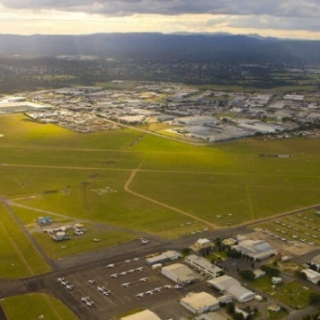
Following a worldwide spate of accidents involving aircraft conducting authorised circling approaches to a suitable runway that was not provided with a straight-in approach, the International Civil Aviation Organization (ICAO) developed a policy that required all States to implement straight-in approaches, where possible, for all instrument approach runways. Australia completed this work some years ago.
With the availability of straight-in approaches, manoeuvring at low level and at/or above the circling MDA, at night or in conditions of reduced visibility within the circling area is becoming less prevalent, although it remains a valid means of approaching the runway to land in certain circumstances. But how are the dimensions of a circling area calculated?
Instrument approach procedure designers, using ICAO PANS-OPS criteria, determine the IFR circling area lateral dimension for each performance category (PC) using the maximum speed for that particular PC and the related true air speed (TAS) at an altitude of 1000 ft above the aerodrome. Below, an example is shown for an aerodrome with an elevation of 1000 ft AMSL from ICAO Doc 8168, Vol I.

At an aerodrome with an elevation that is higher than 1000 ft AMSL, or on a hot day, the TAS will be higher, and the turn radius will be greater, than these standard values, resulting in the requirement for a larger radius than the standard value.
AIP ENR 1.5-5, para 1.6.6, provides contextual information to pilots that includes reference to the radius of each PC’s circling area, based on the standard ICAO para as displayed.
These are the circling areas that pilots plan and use their skills to remain within. However, according to the ICAO methodology, at an aerodrome with a higher elevation such as Armidale in NSW, with an aerodrome elevation of 3556 ft AMSL, the circling area altitude is determined by obstacles that are up to 2.83 nm from the runway end rather than the standard 2.66 nm for a performance category B aircraft on a standard ISA day.
Regardless of the specific parameters that have been used by the procedure designer to determine the circling area, the pilot’s compliance with the provisions stated in AIP is likely to ensure adequate obstacle clearance at the published altitudes.
When preparing Aeronautical Impact Assessments, Aviation Projects’ specialist aerodrome safeguarding consultants apply the relevant provisions of ICAO Docs and the Part 173 Manual of Standards to ensure that all relevant obstacles are assessed, within the requisite IFR circling area dimensions.
At Aviation Projects, we provide trusted advice about airport planning, development and operations and aerodrome safeguarding. Contact us today.
Tags: Aviation Safety, Aerodrome Safeguarding, IFR Circling Area
